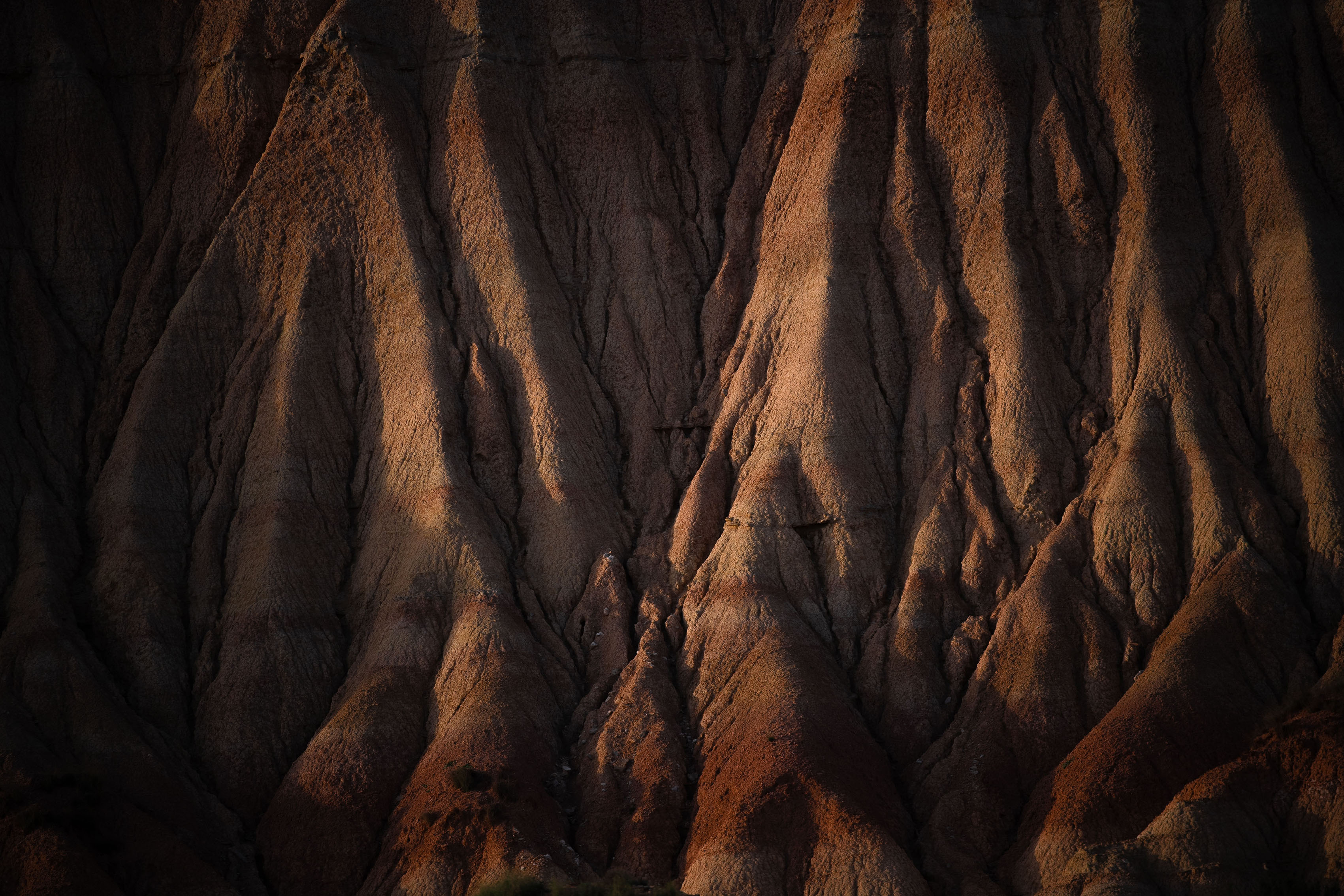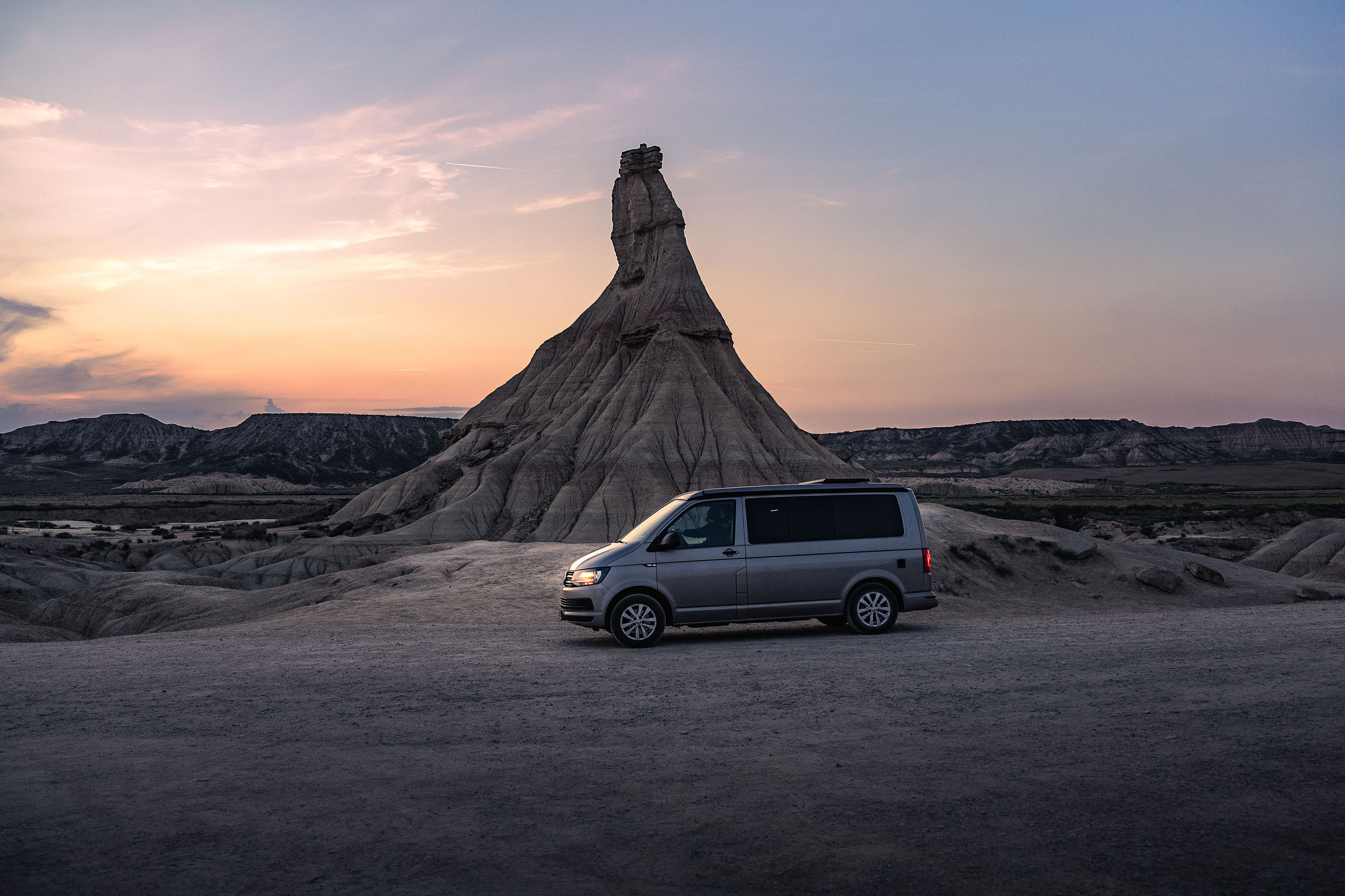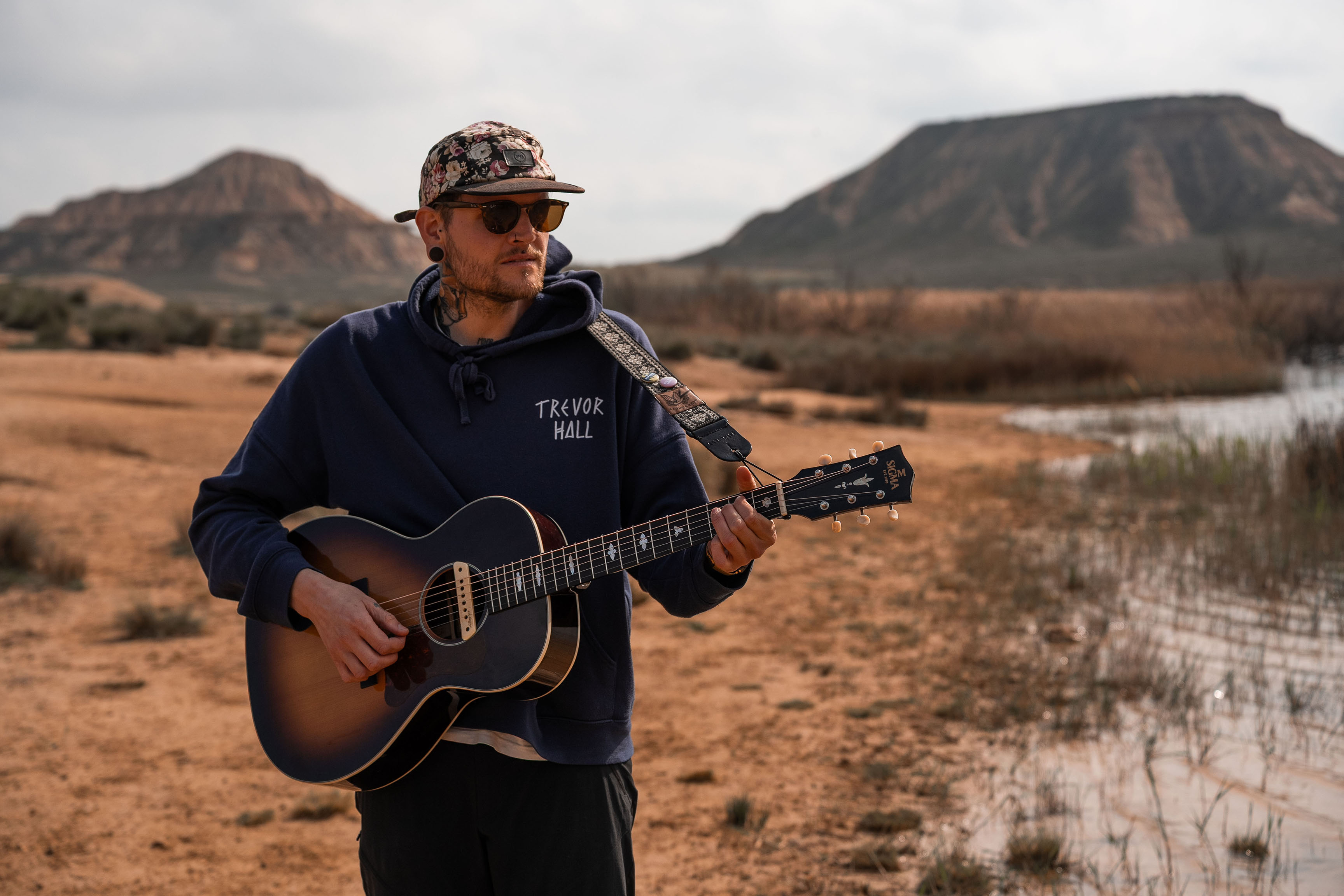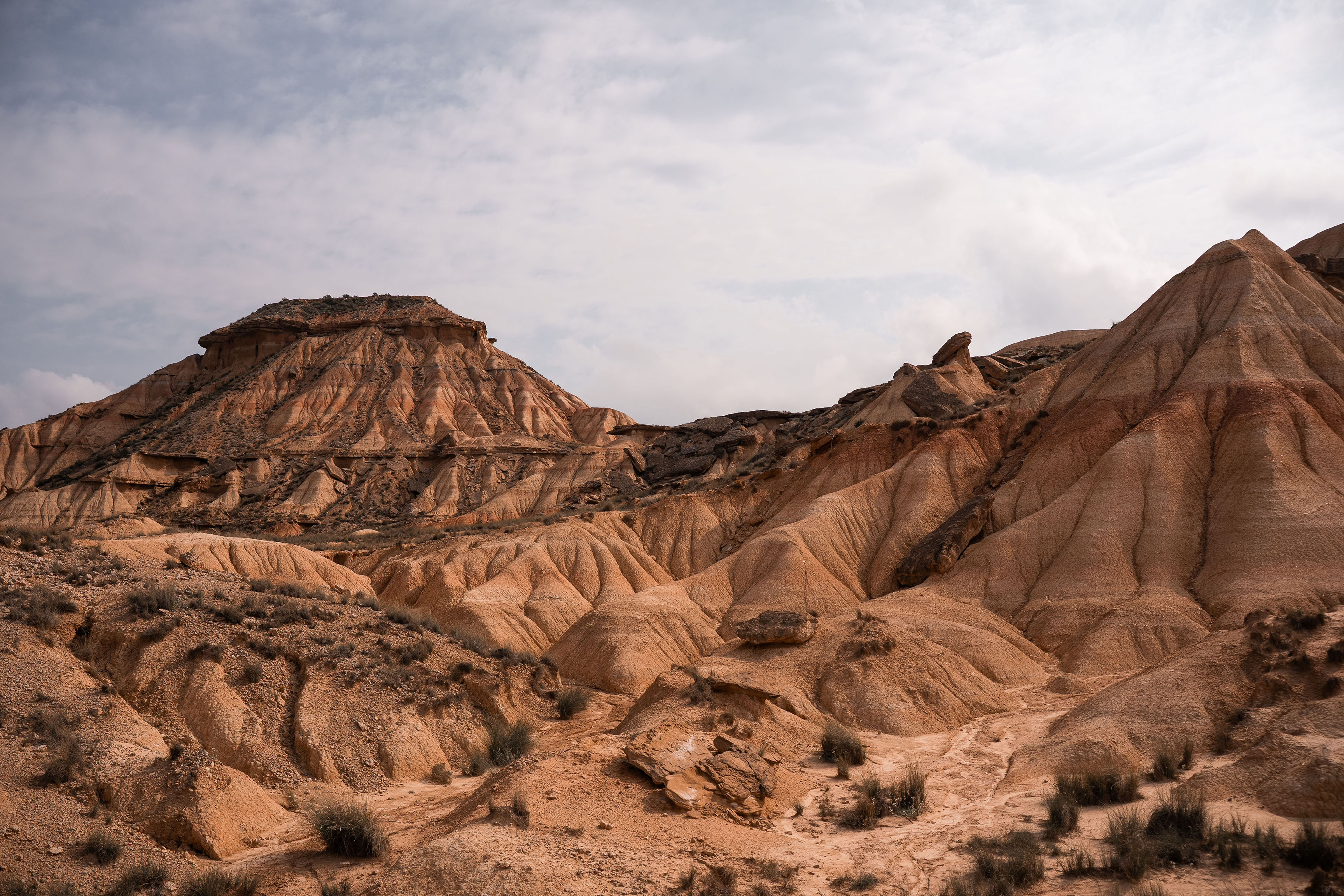
8 Aug 2025 / Desigraphie
Dust, Light, and Silence – A Journey into the Bardenas Reales
Dust, Light, and Silence – A Journey into the Bardenas Reales
A travel story with the Tamron E-Mount Trinity
The Bardenas Reales in northeastern Spain aren’t your typical travel destination – and that’s exactly what makes them so fascinating. Half desert, half movie set, and entirely unique. Instead of trees or rivers, this place is shaped by erosion and clay. It’s a landscape that slows you down – and sharpens your senses.
We visited in April, traveling by van – accompanied by my Sony A7IV and the bright TAMRON E-Mount Trinity: the 17–28mm, the 28–75mm G2, and the 70–180mm G2. I didn’t stick to strict categories when choosing lenses, but rather let the motif guide the decision: sometimes the epic vastness called for the ultra-wide, sometimes the compressed geometry of the telephoto felt right – and the standard zoom was there for all the moments in between.
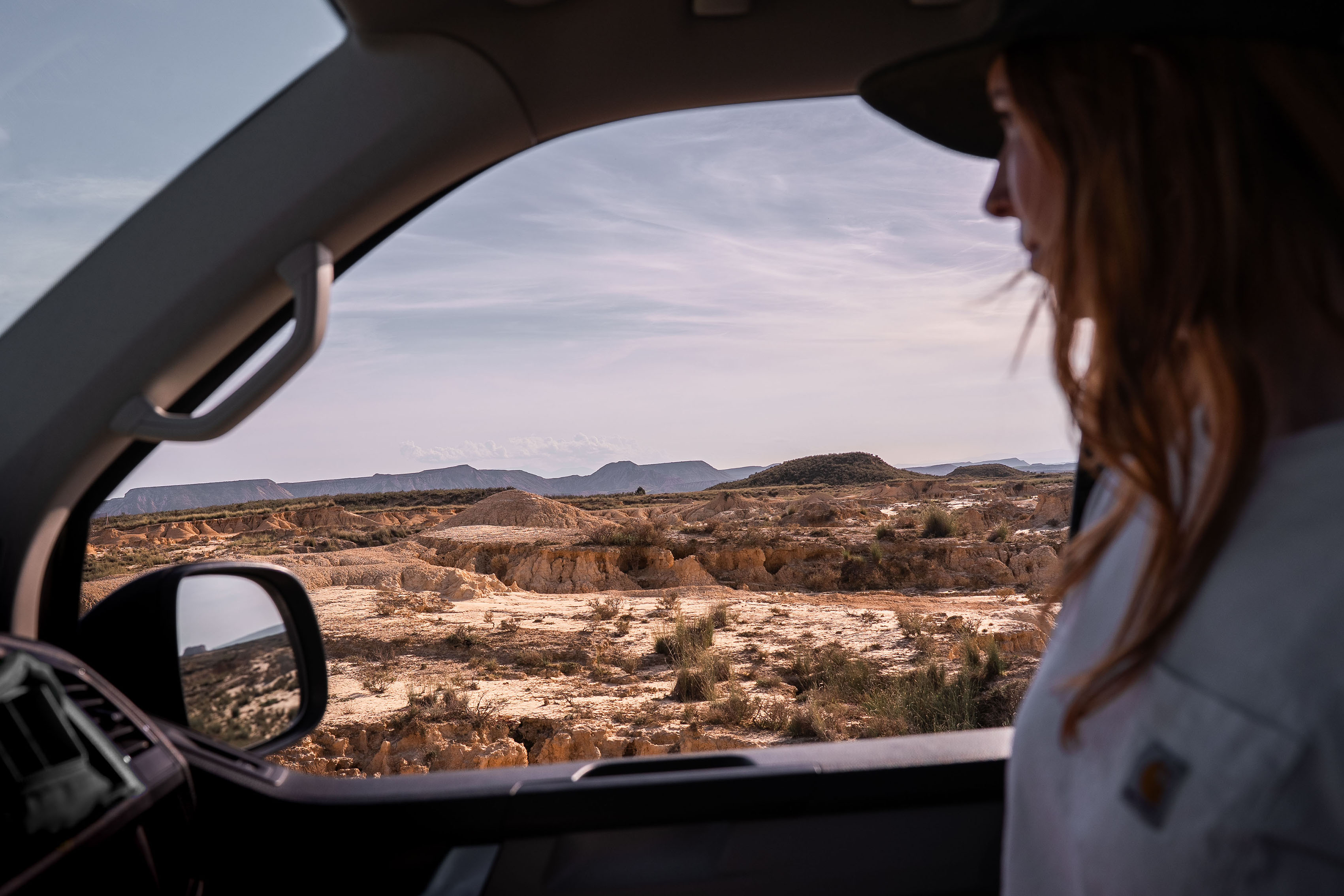
A Landscape from Mars
If you’re visiting the Bardenas Reales, it’s best to head for the central area known as Bardenas Blanca. The marked main track (“Pista Principal”) – a roughly 34 km loop – leads through the most accessible and photogenic parts of this semi-desert and can be driven at a calm, steady pace. Leaving the track is strictly forbidden: the landscape is fragile, and much of the area is part of an active military zone. It’s not uncommon for roads to be temporarily closed, or for the distant sound of gunfire or jets to echo through the air – a surreal contrast to the otherwise meditative scenery. It’s always worth checking access conditions beforehand, either at the visitor center or online.
Even the first few meters feel unreal. The landscape looks like Utah – or Mars – and yet it’s right in the middle of Europe. Cracks stretch across the dry ground, old riverbeds wind through the plain, and bizarrely shaped hills rise up from nowhere. For photographers, that means: lines, textures, and a constant play of light that changes by the minute.
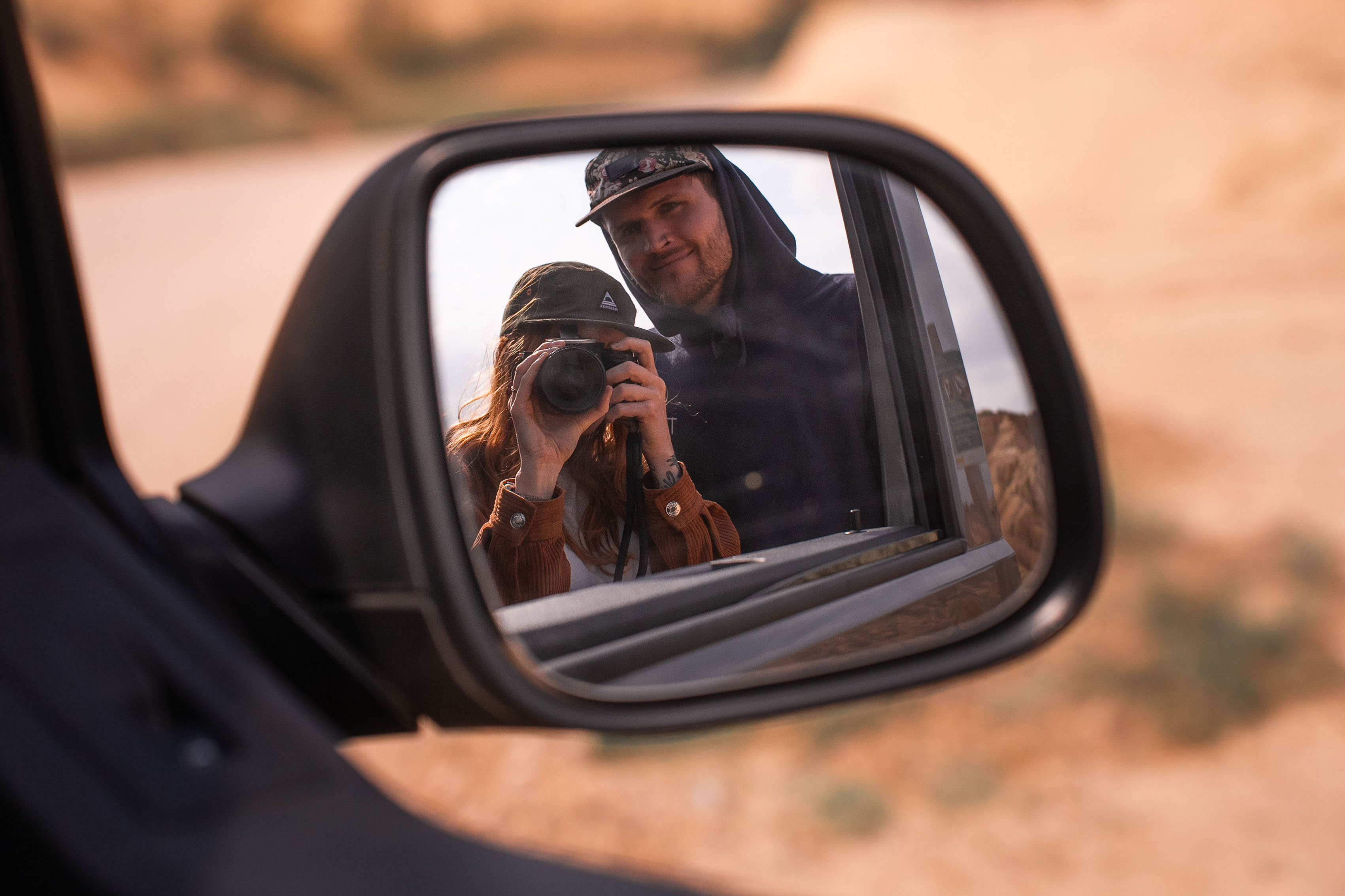
First Impressions
Our first afternoon was ideal to get oriented and feel out the light. The sun was still high, the contrast harsh – but that’s what made it interesting: sharp shadows, dusty air, glowing rock layers. The 28–75mm was my reliable all-rounder – especially for shots inside the van or creative framings through doorways and mirrors. Many of these images say less about the landscape and more about the experience of being on the road.
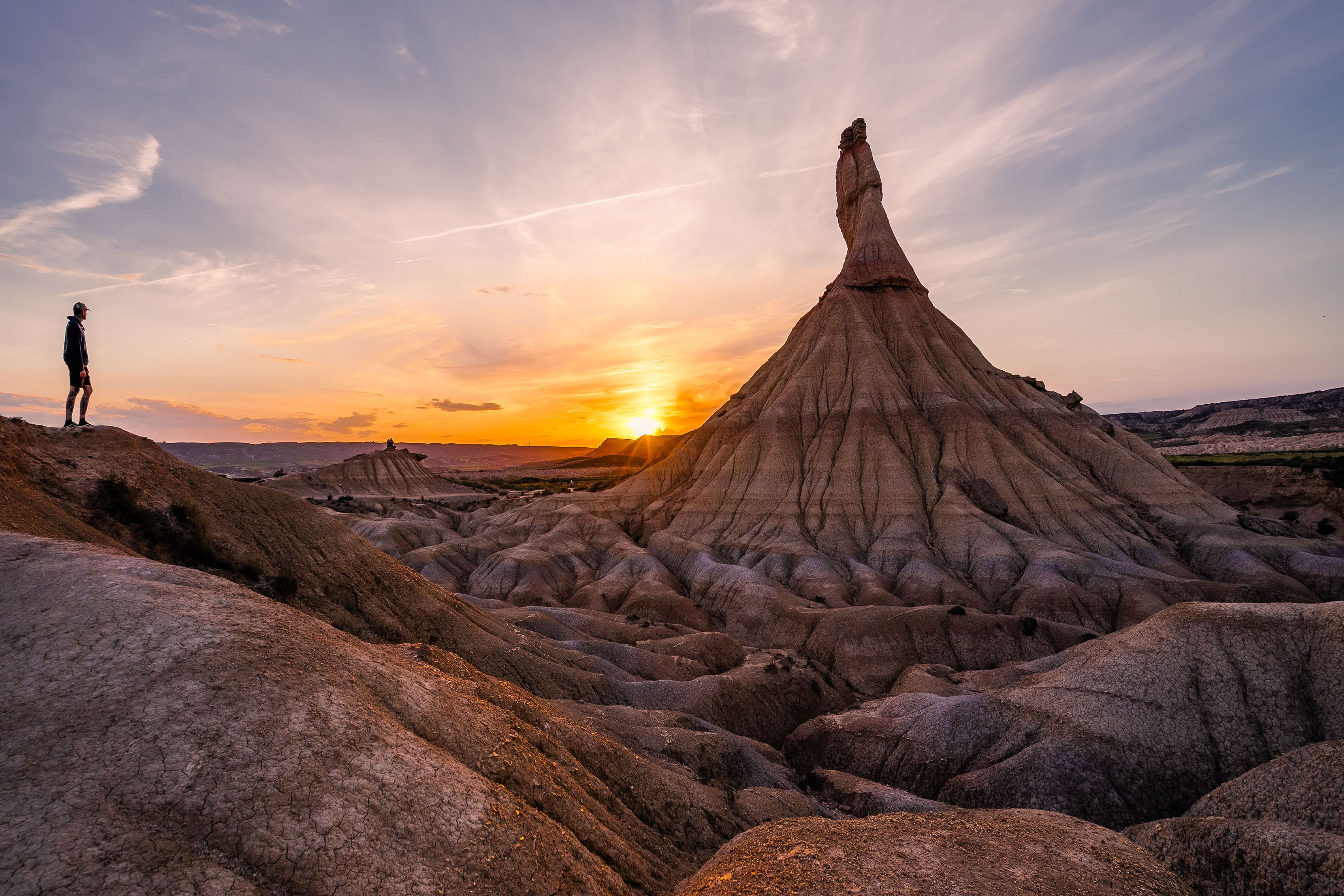
Golden Hour in the Desert
Whether sunrise or sunset – in the Bardenas Reales, the low light turns the desert into a golden stage. The rocks begin to glow, shadows soften across the ground, and even the smallest formations gain depth. During these moments, I especially enjoyed using the 70–180mm. It allowed me to compress scenes, isolate distant hills, and capture rim light dancing in the dusty air.
As peaceful and open as the park is, one place will inevitably stay in your memory: Castildetierra. This iconic rock formation – like a sand tower rising from the plain – is perhaps the most photographed feature of the Bardenas, and for good reason. When we first passed it in the afternoon, the light was still too hard, but during golden hour, everything changed. I switched to the 17–28mm ultra-wide and got down low to include the cracked earth in the foreground. That texture led the eye straight to the formation, with my travel partner positioned off to the left – small and almost lost. That sense of scale was important to me: not only to show the grandeur of the place, but also our own smallness in it.
Whether morning or evening – the light felt the same in its effect: soft, surreal, like time stood still. During our second visit at sunrise, we were lucky to have the place to ourselves for a while.
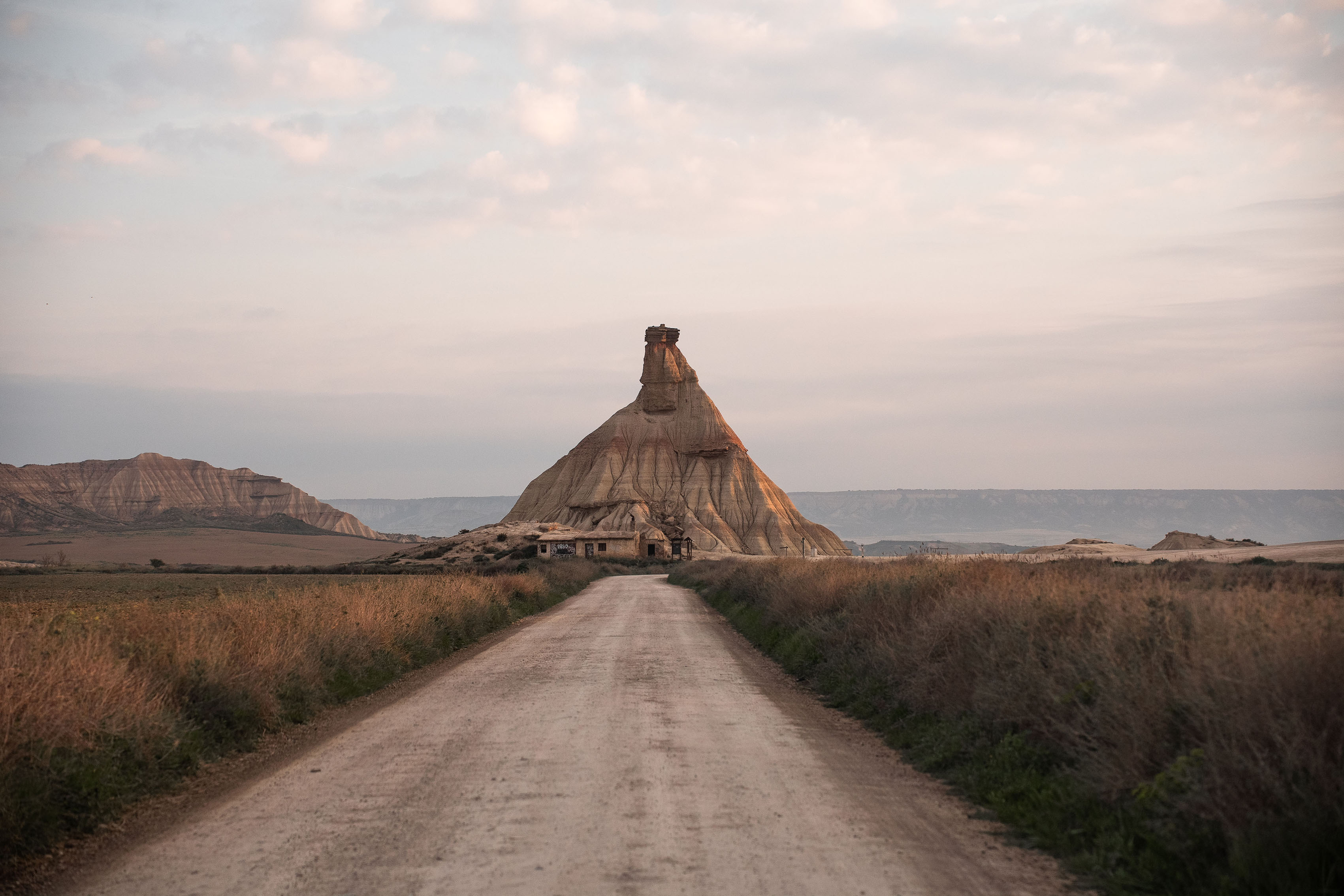
My Tips for Visiting the Bardenas Reales
This semi-desert is not only visually impressive, it’s also a protected UNESCO biosphere reserve. If you’re planning to photograph here, bring time – and respect. Here are my most important tips:
Stay on the tracks. Even though it’s tempting, do not leave the marked roads and paths. The surface is delicate and can be damaged by footsteps or tires.
No wild camping. Overnight stays in the park are forbidden. We simply slept in our van outside the area and returned in the morning.
Check conditions ahead of time. Areas may be closed due to military exercises or erosion protection. Check with the visitor center or official websites.
Don’t disturb wildlife. Keep your distance, avoid loud noises, and use telephoto lenses for wildlife shots.
No infrastructure. There are no services in the park. Bring plenty of water, snacks, sunscreen – and be prepared for wind, dust, and sun.
Make the most of golden hour. Early morning or late afternoon is when the landscape truly comes alive.
Use different focal lengths. Wide angles for depth and scale, telephoto for compression and detail. And in between: creative framings that tell a story.
Take your time. Those who drive slowly and stop often will see more – especially in the spaces between the obvious highlights.
Conclusion: Three Lenses – One Landscape, Endless Perspectives
The Bardenas Reales offer space – for perspective, lines, and mood. With the TAMRON E-Mount Trinity, I had a flexible, lightweight, and reliable kit with me. Each focal range brought something different to the table – from epic wide-angle shots, to documentary-style mid-range frames, to almost abstract compositions with the telephoto. Thanks to their constant F2.8 aperture, I was ready for everything – from first light to blue hour.
If you embrace the light and respect the limits, the Bardenas Reales will give something back: not just photos, but the feeling of having connected with a landscape that doesn’t try to impress – and stays with you because of it.
About the author: Desigraphie
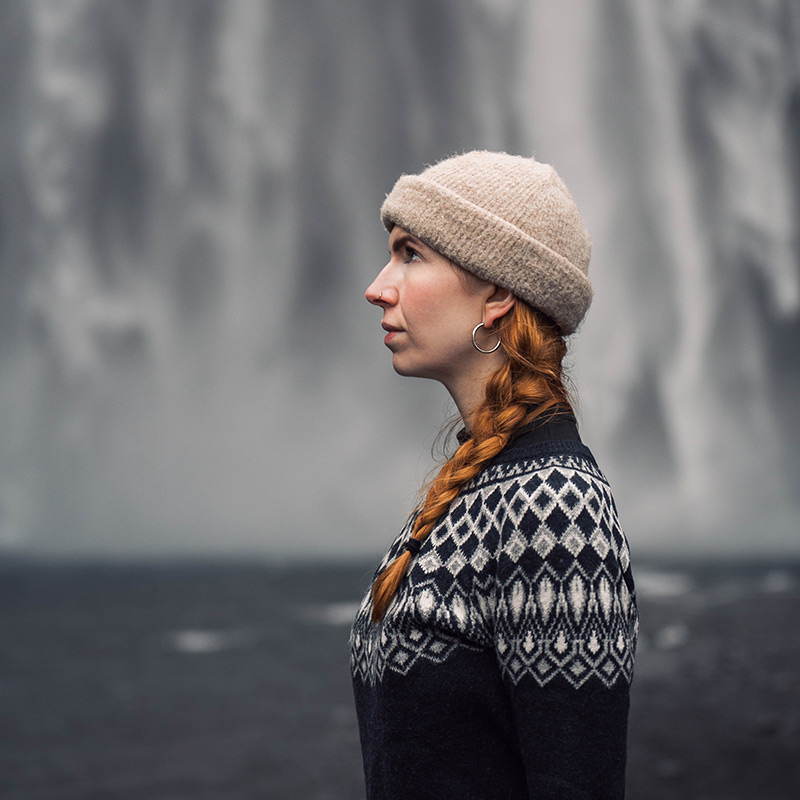
Under the name Desigraphie, Désirée Stoll from Wiesbaden creates photographs that are more than fleeting moments – they capture moods that stir a longing for freedom while evoking reverence for the beauty and transience of nature. With a keen sense for light, harmonious colors, and subtle detail, she crafts imagery that invites you to pause and immerse yourself. Her work inspires a more mindful view of the world, encouraging us to discover new perspectives and find beauty in quiet moments. In a field long shaped by a certain way of seeing, she brings a fresh sensitivity – proving that powerful expression doesn’t have to shout, and that landscape photography is more than just technique or scale. It’s about how a scene is felt – and how that emotion is made visible. For her photography, Desigraphie relies on the Sony Alpha 7IV paired with the TAMRON E-Mount Trinity: the 17–28mm F/2.8 for sweeping perspectives, the 28–75mm F/2.8 as a versatile all-rounder, and the 70–180mm F/2.8 for impactful details. This compact yet powerful setup gives her maximum flexibility without compromising on quality.
TAMRON products mentioned in this article
70-180mm F/2.8 Di III VC VXD G2
Model A065
28-75mm F/2.8 Di III VXD G2
Model A063
